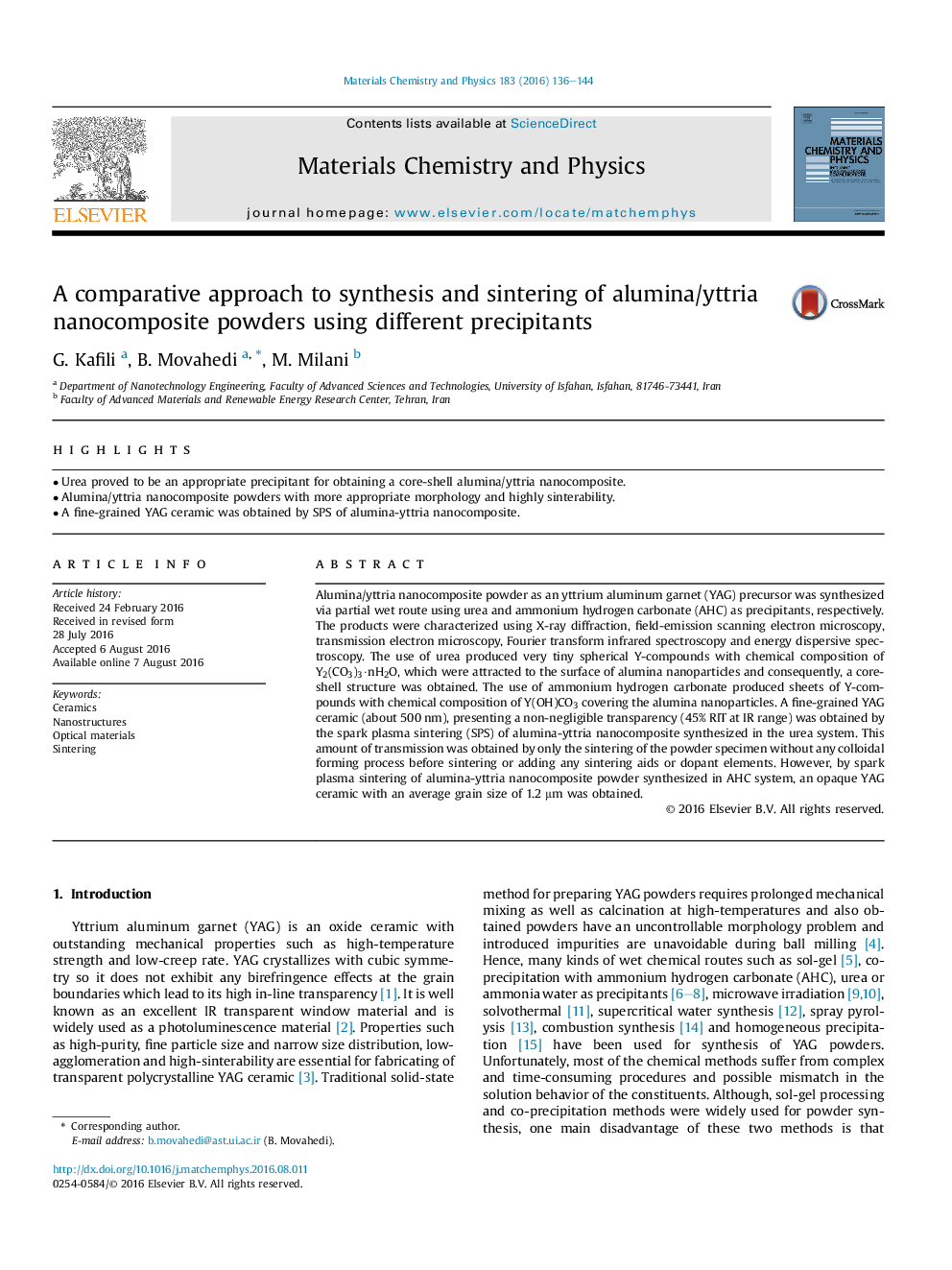| Article ID | Journal | Published Year | Pages | File Type |
|---|---|---|---|---|
| 5448555 | Materials Chemistry and Physics | 2016 | 9 Pages |
â¢Urea proved to be an appropriate precipitant for obtaining a core-shell alumina/yttria nanocomposite.â¢Alumina/yttria nanocomposite powders with more appropriate morphology and highly sinterability.â¢A fine-grained YAG ceramic was obtained by SPS of alumina-yttria nanocomposite.
Alumina/yttria nanocomposite powder as an yttrium aluminum garnet (YAG) precursor was synthesized via partial wet route using urea and ammonium hydrogen carbonate (AHC) as precipitants, respectively. The products were characterized using X-ray diffraction, field-emission scanning electron microscopy, transmission electron microscopy, Fourier transform infrared spectroscopy and energy dispersive spectroscopy. The use of urea produced very tiny spherical Y-compounds with chemical composition of Y2(CO3)3·nH2O, which were attracted to the surface of alumina nanoparticles and consequently, a core-shell structure was obtained. The use of ammonium hydrogen carbonate produced sheets of Y-compounds with chemical composition of Y(OH)CO3 covering the alumina nanoparticles. A fine-grained YAG ceramic (about 500 nm), presenting a non-negligible transparency (45% RIT at IR range) was obtained by the spark plasma sintering (SPS) of alumina-yttria nanocomposite synthesized in the urea system. This amount of transmission was obtained by only the sintering of the powder specimen without any colloidal forming process before sintering or adding any sintering aids or dopant elements. However, by spark plasma sintering of alumina-yttria nanocomposite powder synthesized in AHC system, an opaque YAG ceramic with an average grain size of 1.2 μm was obtained.
